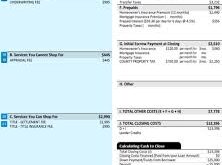Mortgage Refinance Meaning: Understanding the Process. Mortgage refinance is a crucial financial decision that can help homeowners lower their interest rates, reduce monthly payments, or tap into their home equity. Understanding its meaning and implications can make a significant difference in your financial planning. In this guide, we will explore the meaning of mortgage refinance, how it works, its benefits, drawbacks, and the steps involved in refinancing your home loan.
What is Mortgage Refinance?
Mortgage refinance refers to replacing an existing home loan with a new one, typically with better terms. Homeowners opt for refinancing to secure lower interest rates, shorten their loan term, switch from an adjustable-rate mortgage (ARM) to a fixed-rate mortgage, or cash out a portion of their home equity.
How Does Mortgage Refinancing Work?
The process involves applying for a new mortgage loan that pays off the existing one. The new loan usually comes with different terms and conditions, which can lead to financial savings or changes in monthly payments.
Key Steps in the Refinancing Process:
- Assess Your Financial Situation – Check your credit score, income stability, and debt-to-income ratio.
- Determine Your Goals – Decide whether you want to lower your interest rate, reduce your loan term, or get cash out.
- Research Lenders and Compare Rates – Shop around for the best refinancing rates and terms.
- Apply for the New Loan – Submit an application with the chosen lender, including necessary documents.
- Underwriting Process – The lender reviews your financial details, credit history, and home value.
- Home Appraisal – A professional appraisal determines the current market value of your property.
- Loan Approval and Closing – Once approved, you sign the final documents, and the old mortgage is paid off with the new loan.
Types of Mortgage Refinancing
- Rate-and-Term Refinance – Used to obtain better interest rates or loan terms without taking cash out.
- Cash-Out Refinance – Allows homeowners to borrow more than they owe and receive the difference in cash.
- Cash-In Refinance – Borrowers pay down their loan balance to qualify for better terms.
- Streamline Refinance – A simplified process for FHA, VA, or USDA loan holders with minimal paperwork.
Benefits of Mortgage Refinancing
- Lower Interest Rates – Potential savings on total loan costs.
- Reduced Monthly Payments – More manageable financial commitments.
- Shortened Loan Term – Faster equity buildup and savings on interest.
- Debt Consolidation – Use home equity to pay off high-interest debts.
- Switch Loan Type – Move from adjustable to fixed-rate for stability.
Drawbacks of Mortgage Refinancing
- Closing Costs – Fees may offset savings if not considered.
- Credit Score Impact – Temporary dip in credit score due to new credit inquiry.
- Longer Loan Duration – Extending loan terms may increase overall interest costs.
- Home Equity Reduction – Cash-out refinancing reduces home equity.
10 Tips for Successful Mortgage Refinancing
- Check your credit score before applying.
- Compare multiple lenders for the best rates.
- Calculate break-even points to assess savings.
- Avoid unnecessary fees and closing costs.
- Lock in a favorable interest rate.
- Consider shortening your loan term for savings.
- Maintain stable employment and income history.
- Prepare necessary documents in advance.
- Avoid opening new credit lines before refinancing.
- Work with a mortgage professional for guidance.
10 Frequently Asked Questions (FAQs)
1. What credit score do I need to refinance my mortgage? Most lenders require a credit score of at least 620, but higher scores qualify for better rates.
2. How long does the refinancing process take? It typically takes 30-45 days, depending on the lender and documentation process.
3. Are there closing costs for refinancing? Yes, closing costs range from 2% to 5% of the loan amount.
4. Can I refinance with bad credit? Yes, but you may face higher interest rates or require a co-signer.
5. Is cash-out refinancing a good idea? It depends on your financial goals and whether you can manage the additional debt responsibly.
6. What happens if I refinance into a longer-term loan? You may lower monthly payments but pay more interest over time.
7. Can I refinance my mortgage multiple times? Yes, but you should assess whether the savings outweigh the costs.
8. Do I need an appraisal for refinancing? Most lenders require an appraisal to determine the home’s current value.
9. Will refinancing affect my property taxes? No, but cash-out refinancing may increase your home’s assessed value, impacting taxes.
10. Can I refinance if I have an FHA or VA loan? Yes, through streamline refinancing options designed for government-backed loans.
Conclusion
Mortgage refinancing can be a strategic financial move when done correctly. Understanding its meaning, benefits, and potential drawbacks helps homeowners make informed decisions. By securing lower interest rates, reducing monthly payments, or tapping into home equity, refinancing can improve your financial situation. However, it’s essential to consider factors like closing costs, credit impact, and long-term financial goals before proceeding. Always compare lenders, analyze your needs, and seek professional advice to ensure the best refinancing decision for your circumstances.
 mortgage.kbk.news
mortgage.kbk.news
